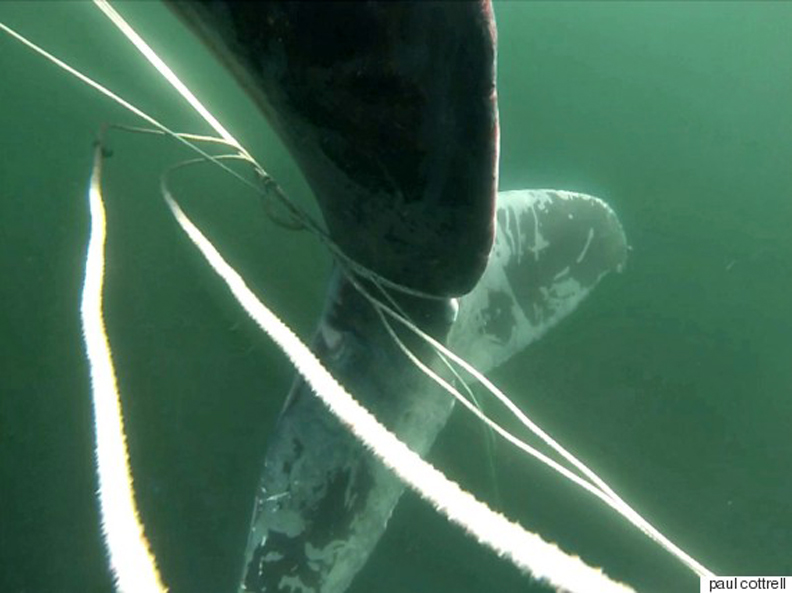When first synthesized, plastic was thought to be a revolutionary material. It is resistant, light, waterproof and doesn’t burn or break easily. In addition, plastic floats in water which makes it a threat to ocean animals, including whales and dolphins. Over the past several decades, our use of plastic has increased.
In 2011, it was reported that an estimated 7 million tons of plastic ends up in the oceans each year. One third of the plastic used is not recyclable, which means it ends up in landfills or in natural environments like oceans. Human waste is carried by the world’s ocean currents and aggregates in remote places. The Great Pacific Garbage Patch, situated in the North Pacific, contains approximately 100 millions tons of garbage with most of it plastic! The largest aggregation of garbage at sea, the Great Eastern Garbage Patch, is located between Hawaii and California, and it is the size of the state of Texas. Plastic poses a serious threat to marine life and it must be be decreased in the oceans. It is the main waste found on beaches all around the world. The weight of floating plastic is thought to be six times that of zooplankton.
Plastic poses various life-threatening risks to marine life. Animals may ingest plastic and choke on it, leading to their death as they are deprived of air. It also has the potential to cause blockage in the digestive tract which can result in severe illnesses or death. In the Atlantic, Leatherback turtles that feed on jellyfish are known to accidentally ingest balloons and plastics bags as they resemble jellyfish. As evidence, plastic is found in the guts of one third of the animals found dead on the beach. Some animals also feed plastic to their young by mistake. As a result, the young die of hunger. One striking example is that of Laysan Albatross that nest on Kure Atoll in the Central Pacific. These sea birds live near the Great Pacific Garbage Patch. They struggle to differentiate floating plastic from prey and often ingest pieces of plastic or feed it to their young. Researchers found they might feed up to 70 pieces of plastic per day to their chicks, which then die of starvation.
Recently, a dead Sperm whale washed on shore in Spain. The 10 meter whale was extremely skinny. As scientists performed an autopsy, they found close to 64 lbs (29 kg) of plastic inside the stomach and determined that the digestive system did not function properly due to the presence of the indigestible plastics. This caused the whale to be undernourished leading to its death.
Plastic is also the primary cause of entanglements and can cause fatal injuries as well as death. It’s a sad and disturbing image to see a sea lion that has inserted its head into a plastic loop in its young age. As it grows up, the plastic ring tightens around its neck and cuts through the skin, leaving the animal in great agony.
A Humpback in Georgia Strait entangled in rope during the summer of 2015. Photo credit: Paul Cottrell
Plastic is found in the ocean in various forms. Some plastics contain toxic chemicals (such as bisphenol A, phthalates, and styrene) which are released into the ocean as the plastic breaks down. These compounds can affect the health of organisms and are known to be endocrine disruptive, potentially harming animals’ health and ability to reproduce. Small particles of plastic also accumulate harmful chemicals such as PCB’s at their surface (see Chemical section). Some health-care products contain plastic particles called microbeads. When microbeads end up in waterways and in seas, they can be ingested by plankton which are then ingested by small fishes and other marine life in higher trophic levels. As evidence, scientists have found some small plankton-feeding fishes have been found to have microbeads in their guts! So many animals in the food chain can be affected by the microbeads, especially the animals that are at the top of the food chain such as Cetaceans.
What can you do?
- Reduce, Reuse and Recycle.
- Say ‘no’ to plastic bags that can end up in a whale’s stomach.
- Buy recycled products.
- Use reusable drink bottles. Don’t buy bottled water.
- Lose the loop – make sure those plastic loops are cut (e.g. drink can holders, box straps)



